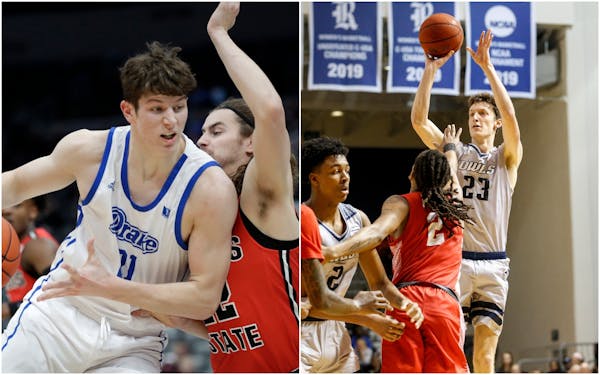The most interesting team to make it to the most recent Final Four held in Minneapolis was Texas Tech, a middling football school that had hired a fascinating character named Chris Beard as basketball coach.
Texas Tech lost in overtime to Virginia in the national championship game at U.S. Bank Stadium. Beard took the team to within a point of winning a title it was never considered a contender for.
In the weeks leading up to that game, Beard discussed how he elevated the Tech program, and the most interesting thing he said was that he knew he couldn't beat programs like Kansas by recruiting better high school prospects, or by playing a wide-open offensive style. Kansas would win those battles every time.
So he built a program that could compete on its own terms, with its own talent level. That meant emphasizing fanatical defense, recruiting players who could and would defend anyone, and aiming to frustrate superior offensive teams. This approach meant that Beard could lose recruiting battles yet win campaigns.
Could Richard Pitino, in his own way, be devising a strategy that could allow Minnesota to compete with better Big Ten programs?
Pitino, like Beard, isn't going to outrecruit the best programs in the country. He, like Beard, might be able to keep certain local players at home — Beard kept Jarrett Culver in Lubbock, and Pitino kept Daniel Oturu in Minnesota — but can't bank on recruiting talent superior to Michigan, Michigan State, Ohio State and Indiana, among others.
What Pitino may be able to do is offer an ideal landing spot for veteran transfers, players who will enable him to field an experienced team that could give him an advantage over, or at least a fighting chance against, teams relying on talented youngsters.
Here's his problem: Pitino is dependent on the NCAA making a decision that benefits student-athletes. That rarely happens without lengthy litigation.
On Thursday, the NCAA board of governors recommended delaying a change to the transfer waiver process that would permit all athletes to switch schools once without sitting out a season.
If all transfers were allowed, it's possible the next time the Gophers take the court, their starting lineup would include Marcus Carr, Drew Peterson, Liam Robbins and Brandon Johnson. All four transferred from other colleges. The fifth presumed starter would be Gabe Kalscheur of DeLaSalle.
Add to the rotation Eric Curry, Isaiah Ihnen, Jamal Mashburn Jr. and Jarvis Omersa, and the Gophers would have a deep and promising rotation.
If the NCAA decides not to let Pitino's transfers play immediately, they will be dependent on the rapid development of younger players, an uncomfortable position for a coach accustomed to an uncomfortable position.
Pitino's athletic director, Mark Coyle, has put him on notice. Pitino has missed on any number of high-profile local recruits. He has failed to generate fan enthusiasm, and his team faltered badly toward the end of the 2019-20 season primarily because he didn't have enough ballhandling depth behind Carr.
Pitino has also reached the NCAA tournament in two of the past four years, and has built another intriguing roster while displaying a plan that could be sustainable — NCAA rules allowing.
Expecting any Gophers coach to "close the borders" on top basketball recruits is unrealistic.
Pitino's ability to attract plug-and-play transfers could be his ticket to remaining competitive even when he misses on Minnesotans.
Peterson played particularly well at the end of his last season with Rice. Robbins gives the Gophers a traditional center with shot-blocking ability. Johnson looks like a prototypical Big Ten power forward. Carr, who is expected to return despite having declared for the NBA, should be one of the best players in the conference.
Pitino's work in attracting quality transfers justifies Coyle's decision to bring him back. If those transfers can't play right away, the NCAA might become a bigger obstacle than Michigan State.
Jim Souhan's podcast can be heard at TalkNorth.com. On Twitter: @SouhanStrib. • jsouhan@startribune.com

Souhan: Why Tiger Woods should keep swinging
Souhan: Scheffler wins Masters again, shows what makes him special
Morikawa falters in final round at Masters

Keeping up with the Joneses who helped design Augusta National's classic back nine


